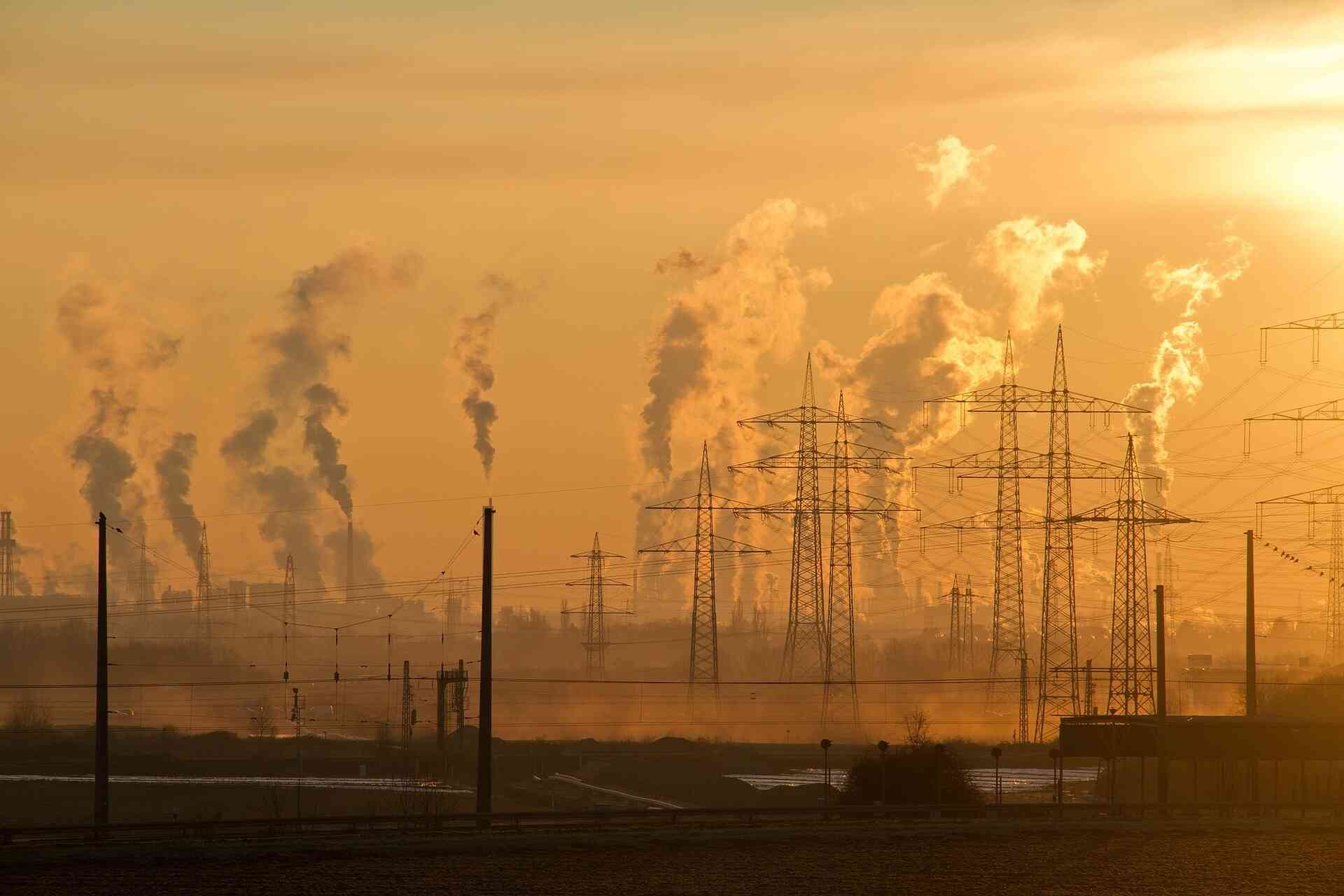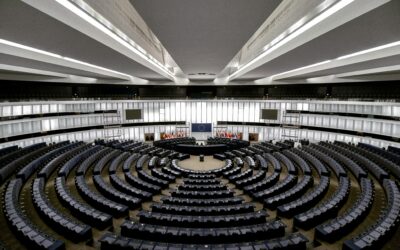The case summary has been authored by PurpLE project postdoc Olga Giakouminaki and SAPIENS Network PhD student Federica Muscaritoli. Associate professors Marta Andhov and Willem Janssen have performed a review and editorial work.
PreussenElektra case clarified the limits of the concept of State with regard to State aid. In addition, the case redefined the threshold of lawful national measures regarding environmental considerations in the context of the EU free movement rules.
Relevant provisions
Quantitative restrictions on imports and all measures having equivalent effect shall be prohibited between the Member States.
The provisions of Articles 30 to 34 shall not preclude prohibitions or restrictions on imports, exports or goods in transit justified on grounds of public morality, public policy or public security; the protection of health and life of humans, animals or plants; the protection of national treasures possessing artistic, historic or archaeological value; or the protection of industrial and commercial property. Such prohibitions or restrictions shall not, however, constitute a means of arbitrary discrimination or a disguised restriction on trade between Member States.
- Save as otherwise provided in this Treaty, any aid granted by a Member State or through State resources in any form whatsoever which distorts or threatens to distort competition by favouring certain undertakings or the production of certain goods shall, insofar as it affects trade between Member States, be incompatible with the common market.
- The following shall be compatible with the common market:
- a) aid having a social character, granted to individual consumers, provided that such aid is granted without discrimination related to the origin of the products concerned;
- b) aid to make good the damage caused by natural disasters or exceptional occurrences;
- c) aid granted to the economy of certain areas of the Federal Republic of Germany affected by the division of Germany, insofar as such aid is required in order to compensate for the economic disadvantages caused by that division.
- The following may be considered to be compatible with the common market:
- a) aid to promote the economic development of areas where the standard of living is abnormally low or where there is serious underemployment;
- b) aid to promote the execution of an important project of common European interest or to remedy a serious disturbance in the economy of a Member State;
- c) aid to facilitate the development of certain economic activities or of certain economic areas, where such aid does not adversely affect trading conditions to an extent contrary to the common interest;
- d) aid to promote culture and heritage conservation where such aid does not affect trading conditions and competition in the Community to an extent that is contrary to the common interest;
- e) such other categories of aid as may be specified by decision of the Council acting by a qualified majority on a proposal from the Commission.
Facts of the case

The case[1] concerns a dispute between PreussenElektra, an energy producer, and Schleswag, an electricity supply undertaking in the German region where PreussenElektra operated. According to the German Electricity Feed-in Act 1998 (Stromeinspeisungsgesetz), public regional electricity distribution companies, like Schleswag, have to buy electricity from renewable energy sources produced in the same area of supply at fixed minimum prices. Due to a legal compensation mechanism, the additional costs deriving from the purchase of energy from renewable resources are meant to be allocated to upstream network operators (i.e. PreussenElektra) as a form of State aid. In 2001, Preussen Elektra appealed to the Regional Court, claiming that since the measure was incompatible with European State aid rules, it should have been reimbursed for the additional costs it had incurred. Therefore, the Regional Court submitted a preliminary reference to the Court of Justice of the European Union (hereinafter CJEU), asking, essentially, two questions. The first regarded the compatibility of the Electricity Feed-in Act with the notion of State aid in EU law. In case the first question was answered in the negative, the Regional Court wanted to know if the Electricity Feed-in Act was compatible with article Article 30 EC (now article 34 TFEU) of the EC Treaty regarding measures having equivalent effect as quantitative restrictions on imports of goods.
Judgement by the CJEU
The notion of State aid
State aid is defined as “an advantage in any form whatsoever conferred on undertakings by national public authorities on a selective basis”.[4] Given the objective of the Community, later the European Union, the creation of a single European market, the regulation of State aid became necessary because it could create an anti-competitive effect.
The CJEU is succinct on the concept of State aid. It explains that the reasons why Article 92(1) is often considered problematic, namely the wording “aid granted by Member States or aid granted through Member State resources”, are not particularly relevant here.[5] According to the CJEU, the language is meant to suggest the existence of State aid when the advantages are granted by central governments (“by Member States”) or by, local or regional authorities or even by public companies (“through Member States resources”). The focus should instead be on whether the aid was granted at all. The obligation under German law did not involve the transfer of state, regional or local resources to undertakings. Therefore, the German measure could not have been regarded as State aid. Furthermore, the advantage was granted by a private company, Schleswag, which excluded for all intents and purposes that it was a case of aid in light of the wording “aid granted by Member States or aid granted through Member State resources”.
Article 30 EC and its relationship with climate change
Nonetheless, incentivising the purchase of a specific product can also threaten cross-border trade. The CJEU was asked whether a provision as the one established in Germany – requiring the purchase of energy from renewable resources – was contrary to Article 30, which sets the prohibition on measures “having equivalent effect to quantitative restrictions on imports, covers any national measure which is capable of hindering, directly or indirectly, actually or potentially, intra-Community trade”, according to the famous Dassonville formula.[6] The CJEU recognised this could potentially be the case of a measure having an equivalent effect.[7]

In the CJEU’s reasoning, two factors were to be taken into account to determine whether a measure was incompatible with article 34 TFEU: the aim of the provision in question and the particular features of the electricity market.[8] Firstly, regarding the aim of the provision in question, the CJEU argued that the objective of the German law was to promote increasing reliance on renewable energy sources and decrease the carbon footprint, together with the protection of health, human, animal and plant life. Taking into account that the inclusion of environmental considerations was not only legitimate for the Member States to pursue, but it was also in line with international conventions and community laws that – at that time – allowed for the prioritisation of renewable energy sources.[9] Indeed, fighting against climate change is a value that the “European Community and its Member States have pledged to combat”.[10] The CJEU also referred to Article 130R of the Treaty of Rome, which established an obligation to integrate environmental requirements into the definition and implementation of other Community policies (now Article 11 TFEU) and that the Treaty of Amsterdam had relocated that provision among the principles of EU law. Therefore, the CJEU considered German law a proper means to favour the renewable energy market and reduce emissions. Secondly, regarding the particular features of the energy market as a factor, the CJEU stated that “once it has been allowed into the transmission or distribution system, it is difficult to determine its origin and, in particular, the source of energy from which it was produced”.[11] The CJEU reiterated that a system of certifications of the energy source was “essential to make a trade in that type of electricity both reliable and possible in practice.”[12]
Finally, the CJEU concluded that German law was compatible with Article 34 TFEU, which implies that distinctly applicable measures were justified in the case at hand.
Commentary
The contribution of this case was twofold; on the one hand, it provided insights regarding the limits of the concept of State aid under Article 107 TFEU. On the other hand, the case provided for an opportunity to reflect on whether a more sustainable option, although hampering market access to other Member States’ suppliers, can be justified on the grounds of environmental protection and public health.
State aid or not State aid?
In order to verify the existence of State aid, the first criterion that the CJEU examines concerns the origin of the aid from the State or an entity linked to the public administration of that State. Then, it must be verified whether there was an actual or potential threat of distorting competition and whether the aid favoured certain undertakings in the production of a certain good, thereby affecting trade between Member States.
In the PreussenElektra case, the CJEU held that in the absence of direct or indirect transfer of state resources, it cannot be considered a case of State aid. In this case, neither “the obligation imposed on private electricity supply undertakings to purchase electricity produced from renewable energy sources at fixed minimum prices”, nor “the allocation of the financial burden arising from that obligation for those private electricity supply undertakings as between them and other private undertakings” fell, according to the CJEU, within the critical definition of State aid and could not therefore be considered as such.[13] The reason was that the State had in fact only an obligation to purchase at minimum prices, while the financial support came from the private operator. As mentioned in the facts of the case, the increased cost for the renewable energy was to be beard by PreussenElektra.
On the applicability of exemptions under Article 36 EC treaty
Regarding the legitimacy of the applied measure, the CJEU relied on two arguments:
- the purpose of the German law was not only legitimate but also in line with European Community (Union) principles, laws and policies for the mitigation of climate change; and
- the characteristics of the energy market.
The CJEU was brief on the first point and did not conduct the proportionality test to determine whether the measures taken did not go beyond what was necessary to achieve a specific objective.[14] In an effort to provide an understanding for the CJEU’s ruling, the following thoughts seem relevant. The German region adopted a measure consistent with the aim to be pursued, i.e., reducing emissions and protecting the environment. The CJEU also argued that climate change was a challenge that the European Community agreed to fight against.[15] However, a measure in favour of reducing emissions did not necessarily mean that there was no intention to favour domestic suppliers, which was why the practice was to carry out a proportionality test.[16] The purchase of renewable energy was to be made from producers located in the same area of distribution/consumption for the main reason of favouring domestic production of renewable energy. From an environmental perspective, this was a legitimate consideration as if the energy had to be transported over a long distance, the environmental benefit of renewable energy would be diminished if not nullified by the negative externalities resulting from the transport. Although the main environmental impacts of the energy sector are related to the production of energy itself – a reason why a switch to renewables is the most direct contribution to climate change mitigation – electricity delivery generates negative externalities mainly because of the phenomenon of “line-loss”.[17]
Climate mileage is controversial, as it could potentially discriminate against suppliers from other Member States because of their geographical distance, potentially distorting competition in the internal market. Furthermore, if to reason in terms of climate mileage, also EU neighbouring countries supplying renewable energy would comply with the short-range distance criteria without necessarily resorting to measures, voluntarily or involuntarily discriminatory.
The CJEU argued that the other reason why the German law was deemed as compatible with article 34 TFEU was because of the characteristics of the renewable energy market at the time of the case. It needs to be considered that: (1) the energy market was characterised by the fact that it was difficult to assess the energy source from which it was produced once the energy was in the grid and (2) at that time, “the liberalisation of the electricity market was as yet in an intermediary phase only”[18].
The CJEU did not take a strict approach to the application of Article 34 TFEU. While one might think that the CJEU would today adopt a more restrictive approach – since the market for renewable energy is more developed, there would be several reasons not to.[19] As a matter of example, when this judgment was issued, the EU environmental protection legislation was still in its infancy;[20] the EU had not yet adopted the Renewable Energy Directive (2008), which assigned each country a national renewable energy quota. This quota constitutes the margin of discretion within which a state can decide how to achieve the target, including support schemes.[21] In addition, the urgency of the climate crisis is now acknowledged by laws adopted at the EU level to curb it.[22] The contribution of the case thus lies not only in the limits of the concept of State aid under Article 107 TFEU but also in the favourable integration of environmental considerations within the classic articles on free movement. This case becomes particularly relevant in an era of pandemics, energy crises, and climate catastrophes. The exceptions to the application of Article 34 TFEU, listed in Article 36 TFEU, relating to public morality, security and politics, would justify their increased use today, given the events that have plagued Europe in recent years.
PreussenElektra: does it impact public procurement?
The PreussenElektra case is not unknown to public procurement. Yet, its primary contribution regarding the limits of the concept of State resources has absorbed the lion’s share of the comments of the case. In contrast, its green aspects have received much less attention.

Nevertheless, it is through this green linkage that the PreussenElektra case is cited in the context of public procurement law when examining its relationship to State aid. Other important paths under which the case is cited are the free movement of goods (Article 34 TFEU) and then the exceptions to the same article. PreussenElektra is expressly referred to in the public procurement context in the EVN Wienstrom case.[23] The latter case concerned a public authority that wanted to purchase energy from renewable sources and clarified some issues concerning the award criteria. In the EVN Wienstrom case, the CJEU clarified that when it is clear that a contracting authority does not intend to verify whether an award criterion has been fulfilled, its conduct could be considered a violation of the principles of transparency and equal treatment. Furthermore, the CJEU clarified that the weighting of an award criterion is at the discretion of contracting authorities. However, regardless of the value attributed to them, the award criteria cannot refer to a renewable energy supply that goes beyond the subject matter of the contract. In other words, what is not explicitly required by the contract cannot be a reason for competitive bidding as it cannot be related to the subject matter of the contract. PreussenElektra is mentioned in the case three times, but only one of these is related to the very issue of the case. Paragraph 40 of EVN Wienstrom, reads, “the CJEU has already held that the use of renewable energy sources for producing electricity is useful for protecting the environment in so far as it contributes to the reduction in emissions of greenhouse gases which are amongst the main causes of climate change which the European Community and its Member States have pledged to combat (Case C-379/98 PreussenElektra [2001] ECR I-2099, paragraph 73)”.[24] The opinion of the Advocate General on the same case refers to PreussenElektra as a precedent of the inclusion of environmental considerations which, transposed in the procurement context, justifies green criteria on the use of energy from renewable sources, relying on the aforementioned paragraph, despite the lack of a sufficiently justified link.[25]
How novel was PreussenElektra?
Although PreussenElektra has been cited in public procurement cases, the ‘greening’ of public procurement law was neither based on nor influenced by PreussenElektra; rather, it paved an autonomous road of its own due to the structural differences between them. Contextualising PreussenElektra, although it was fundamental for environmental integration, its reasoning was anything but novel.
Although both PreussenElektra and the relevant public procurement case law have integrated environmental considerations predominantly through the channel of the so-called supportive integration[26], the independent way the two sectors integrated Article 11 TFEU functions as reminiscent of the differences between coordinated and non-coordinated by EU law sectors. As it was mentioned, during the era in which PreussenElektra was issued, there was no secondary legislation regulating the purchase of electricity from renewable energy sources[27], thus the conciliation had to be operated on the one hand through the acknowledgement of the regulatory autonomy of the Member States and on the other hand through the classic provisions of free movement of goods. Although the CJEU mentioned Article 130R and the then applicable Article 6 EC, it goes without saying that for a field left unregulated by EU secondary law, a vague provision of EU primary law would be impossible to create new or at least to validate already existing national environmentally friendly legislation. Essentially, Article 6 EC enlarged the list of exceptions available in Article 36 and the supportive integration was held exclusively at an EU primary law level.
Against that backdrop, in an area coordinated by EU secondary law, integration of environmental concerns naturally takes a different path. In particular, in the seminal case of Concordia Bus Finland[28]– issued approximately during the same period – the national legislation (in particular, the Finnish law transposing directive 92/50), as well as the exercise of the contracting authority’s discretionary powers, were primarily scrutinized through the filter of EU secondary law. More specifically, considering that the public procurement directives did not aim at the complete harmonization of the field, but simply at its coordination[29], this would normally result in a test where the national legislation is put in between the directive (as the floor of the scrutiny) and EU primary law (as its ceiling). However, in Concordia Bus Finland, the CJEU followed another path. In particular, considering that directive 92/50 remained silent regarding the use of environmental criteria, the CJEU covered this legal void to EU primary law. Through the internal hierarchy of EU law, the CJEU seized the opportunity to add a concrete normative – and not merely programmatic – value to Article 6. In addition to that, considering that the compliant to the treaties interpretation of the directive is no news, the novelty of Concordia Bus was that the CJEU recognised an obligation to integrate environmental considerations into the national law that transposes the directive, although the latter was silent about it. In addition to the exercise of regulatory autonomy, the exercise of a contracting authority’s discretionary powers regarding the use of such a criterion were subsequently only scrutinised against the obligations consolidated from EU secondary law (considering that EU primary law explicitly allowed for this national legislation).
In PreussenElektra, the lack of an EU policy and activity in the field of renewable energy resulted in an approval of national legislation that – although a revolutionary conclusion – did not emerge from a novel consideration, but from a decades-long well-established road. Environmental protection was deemed a legitimate interest that Member States could invoke as an exception to the free movement of goods. On the contrary, it is the existence of sectoral legislation that ‘activated’ the normative force of Article 6 EC and resulted in its first concrete obligation towards national law, which took the form of an ex-post validation of a national existing law.
[1] Case C-379/98, PreussenElektra AG v Schhleswag AG, ECLI:EU:C:2001:160.
[4] Biondi A, ‘Some Reflections on the Notion of State Resources in European Community State Aid Law Developments in European Union Law Dedicated to CFI President Bo Vesterdorf’ (2006) 30 Fordham International Law Journal 1426.
[5] Goossens A. and Emmerechts S, ‘Case C-379/98, PreussenElektra AG v. Schleswag AG, Judgment of the Full Court of 13 March 2001’ (2001) 38 Common Market Law Review.
[6] Case 8-74, Procureur du Roi v Benoît and Gustave Dassonville, ECLI:EU:C:1974:82, para. 5.
[7] PreussenElektra, para. 71.
[8] Ibid., para. 72
[9] In particular, the Court referred, inter alia, to the United Nations Framework Convention on Climate Change, the Kyoto Protocol. Directive 96/92 on the standard rules for the internal market in electricity read that it is ‘for reasons of environmental protection’ that the latter authorized the Member States in Articles 8(3) and 11(3) to give priority to the production of electricity from renewable sources (PreussenElektra, paras 74-76).
[10] PreussenElektra, para 63.
[11] Ibid., para 79.
[12] Ibid., para. 80.
[13] Ibid., paras 59 and 60.
[14] Emmerechts S and Goossens A, ‘Case C-379/98, PreussenElektra AG v. Schleswag AG with Annotation’ (2001) 38 Common market law review 1001.
[15] PreussenElektra, para 63.
[16] “PreussenElektra showed the Court is in a very lenient mood vis-a-vis German measures which prima facie did not seem passable under the Treaty’s Articles on the free movement of goods” in Eliantonio, M., and Peeters, M., Environment and Trade Law in the EU: Seeing the Bees for the Balance. In Research Handbook on EU Environmental Law, Elgar Publishing, 2020, p. 93.
[17] Line loss is regarded as the unavoidable phenomenon by which, for a given amount of energy produced, a proportionate amount is lost in the transmission from the generation facility to the substation. Simply put, the longer the distance, the greater the loss of energy, which depletes part of the environmental cost of producing it. Nevertheless, energy is a primary commodity that cannot be dispensed with, which means that despite these losses, the system remains as it is. The installation of high voltage transmission lines has also effect on biodiversity loss, acoustic and visual pollution. On the topic, US EPA O, ‘About the U.S. Electricity System and Its Impact on the Environment’ (4th August 2015).
<https://www.epa.gov/energy/about-us-electricity-system-and-its-impact-environment> and Battaglini A and Bätjer S, ‘9 – Reducing the Environmental Impacts of Power Transmission Lines’ in Jean-Luc Bessède (ed), Eco-Friendly Innovation in Electricity Transmission and Distribution Networks (Woodhead Publishing 2015), pp. 183-198.
[18] Kingston S, Heyvaert V and Čavoški A, “Climate Change,” European Environmental Law (CUP 2017), pp. 257-297.
[19] Ibidem.
[20] Examples are Directive 89/428 on the harmonisation of national rules for the reduction of pollution caused by waste from the Titanium Dioxide industry, the Integrated Pollution Prevention and Control (IPPC) Directive 2008/1/EC, the Directive 2008/50/EC on Air Quality Framework.
[21] See Article 3 of the Renewable Energy Directive 2009/28/EC “In order to reach the targets set in paragraphs 1 and 2 of this Article Member States may, inter alia, apply the following measures: (a) support schemes; (b) measures of cooperation between different Member States and with third countries for achieving their national overall targets in accordance with Articles 5 to 11.”
[22] For instance, the recent Regulation (EU) 2021/1119 of the European Parliament and of the Council of 30 June 2021 establishing the framework for achieving climate neutrality.
[23] Case C-448/01, EVN AG and Wienstrom GmbH v Republik Österreich, ECLI:EU:C:2003:651.
[24] Ibid., para. 40
[25] Case C-448/01, Opinion of Advocate General Mischo, ECLI:EU:C:2003:121, para 37.
[26] The existing EU legal framework has been interpreted in a way that allows for the integration of environmental considerations, avoiding conflicts between the well-established economic acquis and the emerging environmental narrative, Nowag J, Environmental Integration in Competition and Free-Movement Laws, OUP, 2017.
[27] Directive 2001/77/EC of the European Parliament and the Council of 27 September 2001 on the promotion of electricity produced from renewable energy sources in the internal electricity market.
[28] Case C-513/99, Concordia Bus Finland, ECLI:EU:C:2002:495.
[29] On procurement directives as instances of simple coordination see, Cases 27/86, 28/86 and 29/86, CEI v Association intercommunale pour les autoroutes des Ardennes, ECLI:EU:C:1987:355, para 15; Case 31/87, Beentjes v Netherlands, ECLI:EU:C:1988:422 para 20; Case C-470/99, Universale-Bau and others, ECLI:EU:C:2002:746, para 88; Joined cases C-285/99 and C-286/99, Mantovani, ECLI:EU:C:2001:640, para 83.




0 Comments